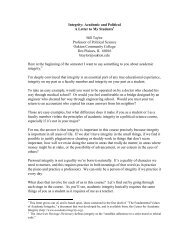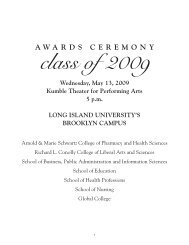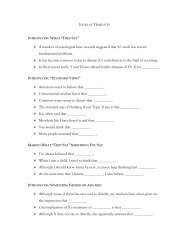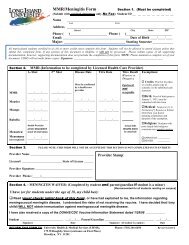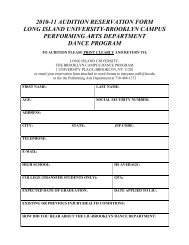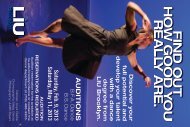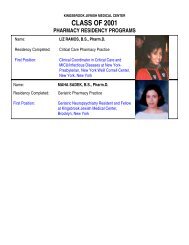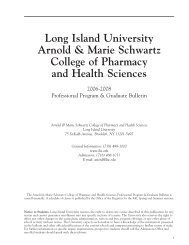united nations advanced certificate faculty - Long Island University
united nations advanced certificate faculty - Long Island University
united nations advanced certificate faculty - Long Island University
You also want an ePaper? Increase the reach of your titles
YUMPU automatically turns print PDFs into web optimized ePapers that Google loves.
During the course of the war, hundreds of thousands of children were displaced internally, for<br />
many, two or three times. Many others became refugees in neighboring countries. Finally, the<br />
increased family impoverishment and continued separation of children from their families contributed<br />
to the increase in the number of children on the streets and the arrests of children for common<br />
crimes. These children were detained in facilities that were far below minimum international<br />
standards and conditions.<br />
The Xaverian Missionaries Programme for the<br />
Rehabilitation and Reintegration of Child Ex-Combatants.<br />
To address the needs of separated children (child soldiers, unaccompanied children and children<br />
suffering from war-related stress UNICEF developed a Child Protection Program in Sierra Leone.<br />
This programme succeeded in establishing structures for the demobilization and reintegration of<br />
child soldiers and identification, registration, documentation and reunification of children separated<br />
from their families.<br />
In 1999, the Xaverian Missionaries joined UNICEF in this program. We offered a center where<br />
children who had been with the fighting forces could start their process of rehabilitation. Our center,<br />
St. Michael’s Interim Care Center, was located in Lakka, a small village near Freetown, the<br />
capital city. By July 1999, large numbers of children were being admitted to St. Michael’s in<br />
response to the Lome Peace Accord and, by January 2000, the center was well over capacity. The<br />
reunification of children with their families was almost impossible. The center was becoming<br />
unmanageable, and the general view was that the center had become a “parking-lot” where children<br />
were placed and from which there was no way out.<br />
In an attempt to solve this problem, we decided to move children out into the community and into<br />
a program we called Alternative Care. This was something new and few people believed it would<br />
work. However, we proved that it was possible. Eventually, UNICEF adopted the idea and our<br />
program became a pilot for other centers in Sierra Leone. Journalists, researchers and world leaders<br />
(among them UN Secretary General Kofi Annan) visited and studied the program. UNHCR<br />
also asked us to establish a similar program for separated refugee children returning into Sierra<br />
Leone.<br />
Children from the fighting forces (released abductees, child mothers, ex-combatants and other<br />
separated children) enter into the program through different channels. Since late 1999, most of the<br />
children came from the demobilization centers, although significant numbers were captured and<br />
handed over to UNICEF by the security forces, were part of a negotiated release/handover, or<br />
were picked up by UN military personnel on patrol. Irrespective of the way they entered the program,<br />
all the children had to spend a period of time in our center.<br />
St. Michael’s was based on the principle of family care in an environment that facilitated smooth<br />
reintegration. Children felt secure and comfortable in a protected environment. School, workshops,<br />
sports and other activities kept them busy during the whole day. The idea was that children<br />
could speak up and share their feelings. When they first arrived in the center they could be very<br />
violent and tended to show off. Stories of killings, amputations, rapes and lootings were common<br />
3



